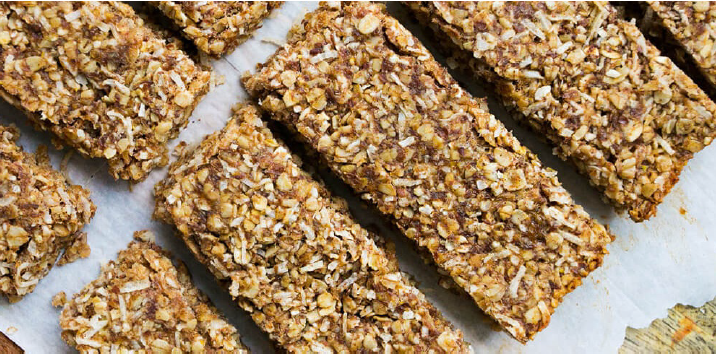The Ultimate Guide to Protein Powders + My Everyday Green Smoothie Bowl Recipe
Choosing a protein powder can be tricky. There are an overwhelming number of sources, types, flavours, colours, and combinations which could confuse even the savviest nutrition junkie. Here is a simple guide to protein powders for every diet and nutritional need - from vegan to carnivore to athlete - and everyone in between.
Do you even need to use a protein powder?
Protein is a macronutrient that is made up of amino acids. 9 of these amino acids cannot be produced by the body and are therefore considered ‘essential’. The only way to obtain these is through your diet. Protein is important because it is found in your muscles, skin, hair, nails, bones, connective tissues and cells. Protein keeps you feeling full, satisfied, and repairs muscles.
Protein requirements range from 0.8g - 1.5+g per kg of body weight.
Protein powders can be a great way to meet these targets, especially because as we age, we stop using protein as efficiently. Protein supplements can help with muscle repair, growth and stabilize blood-sugar (helping to decrease those pesky cravings). The bottom line: It's essential to meet your protein targets for optimal health.
The best way to get your protein is from a whole food source - lean meats, beef, tofu, beans, lentils etc. With that being said, sometimes diet isn't enough. Supplementing with protein powders can be a great idea for those who are trying to lose weight, vegans, vegetarians, those who do strenuous exercise or cannot meet their protein requirements through food.
What to look for (+ avoid!) on labels
Avoid protein powders that contain any artificial flavours, colours, preservatives, artificial sweeteners and sugar. Lots of companies will add artificial flavourings and LOTS of sugar (or bad-for-you artificial sweeteners) into their powders- check the labels! Choose protein powders that have no added sugar to avoid adding unnecessarily increasing your sugar intake. I like natural sweeteners like stevia or monk fruit which can increase sweetness without calories.Also, try to ensure that your protein powder has a ‘complete’ source of proteins including all of the 9 essential amino acids - histidine, isoleucine, leucine, lysine, methionine, phenylalanine, threonine, tryptophan, and valine,
Animal-Based Sources
It’s important when choosing animal proteins to be conscious of the source. Grass-fed, organic, antibiotic and hormone-free are the best options to avoid unwanted contaminants.
Whey
Made from - Cow’s milk
Pros- Whey is a complete protein (containing all amino acids including essential amino acids). Whey has a large body of research behind it as a protein supplement for muscle growth and repair. Most people, even those who are lactose intolerant can handle the low-lactose levels found in whey proteins.
Cons- Can cause digestive upset for some people (bloating!). Unless you’re buying good quality whey protein, the sourcing can be questionable. Most companies add unwanted flavours and sugars (or sugar alcohols) to make it more palatable. Obviously not ideal for those who are avoiding dairy.
Best for: As it is quickly absorbed, it is ideal for post workout muscle repair. It is the most economical and a great whole-protein source for those who can digest dairy.
Casein
Made from - Cow’s milk
Pros - Casein, like whey, is made from cow's milk. However, casein is digested more slowly than whey making it ideal to supplement for long-lasting protein absorption (like over-night muscle repair).
Cons - As casein is digested slowly, it not ideal for post-workout muscle repair. Can be more expensive. Like whey, if not buying organic, grass fed and hormone/antibiotic free - the source can be questionable.
Best for - Everyday protein, or in combination with whey.
Collagen
Made from - Animal or marine-sourced connective tissues and bones
Pros- Collagen is found in your hair, nails, skin and connective tissue, making it the ultimate beauty and joint supplement. It can also help repair and restore the gut-lining and support gut function.
Cons- Collagen can be very expensive and isn't a complete protein (it's missing some essential amino acids). It's important to get hydrolyzed collagen so it can be easily absorbed in the body. Collagen might not be the best option for muscle growth as it isn't a complete protein.
Best for- Those with compromised gut health, digestive concerns, joint problems or who want to optimize skin, hair and nail health. Also great for those who aren’t strictly vegetarian but cannot digest dairy.
Beef Protein
Made from - Hydolyzed beef or bone broth
Pros- While this sounds crazy - hear me out - it is delicious. It mixes well and doesn't taste like, well... beef. Beef protein is an awesome option looking for those who are looking for a complete protein source but can't digest dairy and whey.
Cons- As with any meat product, it's important to make sure your protein is sourced from organic and grass-fed beef. Also beef protein may not be absorbed as well as whey. It can also be very expensive.
Best for- Those who are lactose intolerant, can't digest whey or looking for a complete-protein alternative to collagen.
Plant-Based Sources
Unlike most animal sources, not all plant sources contain a complete amino acids profile and some lack the essential amino acids. Therefore, it is important to choose a plant-based protein powder that has multiple sources. Like the animal-based proteins, always choose organic sources.
Hemp
Made from - Hemp seeds
Pros - Hemp protein is easily digestible and very allergy-friendly (anti-allergenic). It contains essential fatty acids including omega-3’s and alpha-linoleic acid. Very close to a complete amino acid profile.
Cons - Less protein per serving than other protein supplements. Somewhat grittier in texture.
Best for - Those who are looking for an everyday plant-based protein from a minimally processed source with essential fatty acids.
Soy
Made from - Soy beans
Pros - Soy is one of the only plant-sources that is considered ‘complete’ (with all essential amino acids). Can be easily found at grocery or health food stores, blends up easily and is usually fairly inexpensive.
Cons- Soy is one of the foods that has been mass-produced and therefore undergone significant genetic modification (GMO). It is important to choose a soy protein that is GMO free and grown organically. Research is conflicting, but soy may also not suitable for those with hormonal concerns.
Best for: An inexpensive, complete plant-based protein source. Can be easily found and has a minimal flavour which means it blends up nicely in smoothies and can be used in vegan cooking.
Pea
Made from- Yellow Split Peas
Pros- One of the most easily digestible plant-based proteins. Suitable for those who are allergy sensitive or avoiding soy. Contains high amounts of arginine for muscle growth.
Cons- Pea protein is not a complete protein. Also, not as smooth when blending into smoothies.
Best for - Those who want a easily digestible protein and who do not eat dairy or soy. Also great for those who are looking to build muscle using a vegan protein.
Rice
Made from -Brown rice
Pros- Extremely allergy-friendly, easily digestible and suitable for those on an elimination diet. Usually well-priced. Brown rice protein also contains, fibre, B-vitamins and carbohydrates. Low-FODMAP diet-friendly
Cons- Rice protein is not a complete protein.
Best for - Those who are looking for an allergen and elimination diet-friendly protein powder. Also great for those who are on a low-FODMAP diet.
My Everyday Green Smoothie Bowl
I always aim for 4 things in every smoothie: protein, healthy fats, fibre and veggies. This smoothie it all, including a secret ingredient - zucchini - which gives it the creaminess you like from bananas without extra sugar! You get the protein from the powder, healthy fats from the avocado + chia, fibre from the flax or chia and veggies from the kale + zucchini.
I like to eat mine with a spoon (smoothie-bowl style) and top it with fresh berries for some natural, low-sugar sweetness and pumpkin seeds for magnesium and crunch!
Ingredients
1 scoop Designs for Health PaleoProtein OR Manitoba Harvest Hemp Protein
1/4-1/2 avocado (size dependant)
1/2 of a zucchini, frozen, cut into chunks
1 cup kale
1/4 cup berries
1 tbsp chia OR ground flax seeds
1 cup water
Ice
Directions:
Put all the ingredients in a blender and blend!
Serve topped with berries, pumpkin seeds or hemp seeds and 1 tbsp of nut butter





